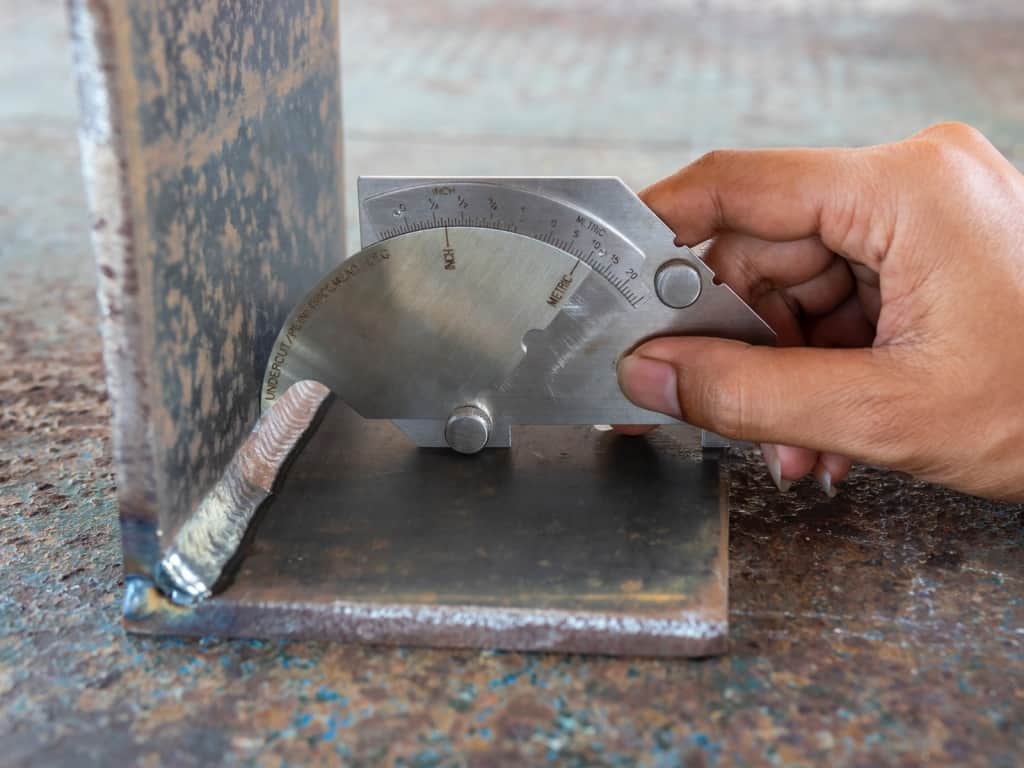Comprehending the Causes and Solutions for Undercut Welding in Metal Fabrication Procedures
In the realm of steel fabrication processes, the occurrence of undercut welding positions a considerable challenge that requires a thorough understanding of its causes and practical remedies. The complex interplay of various elements throughout welding operations can bring about this unwanted phenomenon, affecting the structural honesty and overall quality of the bonded joints - Preventing weld undercut. By exploring the root triggers of undercut welding and exploring reliable therapeutic measures, makers can raise the criterion of their workmanship and ensure the production of flawless steel elements
Usual Causes of Undercut Welding
Regularly overlooked in metal construction, undercut welding occurs due to different factors that demand meticulous interest and competence to be effectively mitigated. Furthermore, improper welding techniques, such as using the wrong welding angle or travel rate, can also contribute to damage development. The choice of welding parameters, such as voltage, present, and cord feed speed, plays a significant role in the event of undercut welding.
Impact of Incorrect Welding Parameters
Unreliable welding criteria can substantially jeopardize the stability and quality of bonded joints in metal manufacture procedures. The impact of wrong welding specifications materializes in various ways, resulting in structural weaknesses and flaws in the welded components. One essential aspect influenced by incorrect welding specifications is the infiltration deepness of the weld. Insufficient warm input because of low welding currents or excessively high traveling rates can cause insufficient fusion in between the base metals, bring about insufficient joint infiltration and compromised bonds. Conversely, extreme heat input triggered by high welding currents or slow-moving traveling speeds can result in burn-through and extreme support, creating a breakable and unsteady weld framework. Furthermore, inaccurate specifications such as incorrect voltage settings or incorrect electrode angles can add to erratic weld bead profiles, absence of combination, and enhanced chances of defects like undercutting. Meticulous interest to welding parameters is vital to guarantee the production of high-quality welds with the preferred mechanical residential or commercial properties and structural stability.
Impact of Improper Lantern Angle
Incorrect lantern angle in welding procedures can significantly impact the quality and honesty of the final weld joints in steel construction processes. Undercutting is a common welding problem where a groove develops along the weld toe, weakening the joint and compromising its structural honesty.
A lantern angle that is also high can result in not enough penetration, incomplete blend, and enhanced spatter. On the other hand, a torch angle that is also superficial can cause too much penetration, burn-through, and distortion of the base product. Preventing weld undercut. Appropriate lantern angle is important for ensuring consistent weld quality, strength, and look
To stop undercutting and other flaws caused by incorrect lantern angles, welders have to be educated to maintain the appropriate torch angle throughout the welding procedure. Routine surveillance and change of lantern angles throughout welding can help achieve audio welds with marginal defects.
Duty of Inadequate Welding Methods

An additional element of inadequate welding methods is improper weld preparation. Insufficient cleaning of the base metals, wrong joint design, or insufficient side prep work can all add to undercut welding. Furthermore, insufficient shielding gas protection or using the incorrect kind of gas can cause insufficient fusion and the development of undercut flaws.
To address the role check these guys out of poor welding methods in steel manufacture procedures, it is important to provide extensive training for welders. Proper education on welding parameters, joint preparation, and shielding gas selection can help avoid undercut welding and make sure top notch welds in steel manufacture jobs.
Efficient Solutions for Undercut Welding
Dealing with undercut welding in steel construction calls for carrying out effective remedies to improve weld top quality and structural integrity. Among the key services to combat undercut is to change welding specifications such as voltage, present, and take a trip speed to make certain correct warm input and blend. By fine-tuning these settings, welders can avoid extreme melting of the base steel and filler material, lowering the likelihood of undercut formation.
Additionally, correct joint prep work is essential in protecting against undercut. Guaranteeing tidy base steel surfaces complimentary of contaminants and utilizing the ideal bevel angle can help advertise far better weld penetration and decrease the danger of undercut - Preventing weld undercut. Using suitable welding methods, such as oscillating the lantern or weaving, can additionally aid in distributing warm equally and filling up the weld joint sufficiently, lessening the opportunity of undercut defects
Additionally, choosing the proper welding consumables, consisting of electrodes and filler steels, is essential in reducing undercut. Using materials with suitable chemical make-ups and mechanical buildings can contribute to accomplishing audio welds with marginal undercut. Normal inspection and quality assurance actions should also be click to find out more implemented to find and resolve undercut issues without delay, ensuring the total honesty of made metal components.

Verdict
Finally, understanding the reasons and options for undercut welding in metal manufacture processes is essential for attaining high-quality welds. By dealing with common helpful site causes such as inaccurate welding criteria, incorrect torch angle, and poor welding strategies, welders can prevent damaging and ensure solid, sturdy welds. It is vital to focus on these aspects and carry out efficient remedies to boost the general welding process and end product high quality.

Comments on “Step-by-Step Guide to Preventing Weld Undercut in Different Metals”